
Cinematography
Delphine Seyrig decided to work on a film project about Calamity Jane to reveal Jane’s sensibility and insight about life in those letters to her daughter. The reading of those letters permits a self-reflection about feminism and motherhood.

Producer
Delphine Seyrig decided to work on a film project about Calamity Jane to reveal Jane’s sensibility and insight about life in those letters to her daughter. The reading of those letters permits a self-reflection about feminism and motherhood.

Director
Delphine Seyrig decided to work on a film project about Calamity Jane to reveal Jane’s sensibility and insight about life in those letters to her daughter. The reading of those letters permits a self-reflection about feminism and motherhood.

Director
"The film Je, Nous, I or Eye, Us is a mini essay that replies to a question about subjectivity in the 1970s while I was making my film 'The Camera Je, La Camera: I' about taking photographs. The new film from 2014 uses footage shot at the time of The Camera: Je but never used in 1976 and 1977 and adds to the 16mm film a series of titles about a photographer’s subjectivity then and now." (Babette Mangolte)

Director

Director of Photography
Семь перформансов классиков жанра, созданных в 1960-е и 1970-е и «реанимированные» Мариной Абрамович по причине их плохой задокументированности. Желая избежать ошибок прошлого, Абрамович на сей раз дотошно и скрупулезно задокументировала все семь акций: они были сняты на видеокамеры с разных ракурсов.

Editor
Семь перформансов классиков жанра, созданных в 1960-е и 1970-е и «реанимированные» Мариной Абрамович по причине их плохой задокументированности. Желая избежать ошибок прошлого, Абрамович на сей раз дотошно и скрупулезно задокументировала все семь акций: они были сняты на видеокамеры с разных ракурсов.

Director
Семь перформансов классиков жанра, созданных в 1960-е и 1970-е и «реанимированные» Мариной Абрамович по причине их плохой задокументированности. Желая избежать ошибок прошлого, Абрамович на сей раз дотошно и скрупулезно задокументировала все семь акций: они были сняты на видеокамеры с разных ракурсов.

Self
"To begin with, we have Babette Mangolte, the camera technician on Hotel Monterey, La Chambre and Jeanne Dielman, but who for me also symbolises the New York years, she introduced me into the very core of what was new, even revolutionary, in New York, and our interview is about the city of New York in the early 70s." – Chantal Akerman

Cinematography
Two women meet at a crossroads... A chance encounter between two women struggling to stay afloat, in an era of the downsizing of dreams. Ross Lipman's one fiction film to date comes from a genre even more rare in the US than experimental work-adult drama. Printed in muted tones that conjure silent film hand-painting, and merging theater-based naturalism with an elliptical psychological encounter, "The Interview" at once utilizes and destroys mainstream narrative expectations.

Writer
A documentary that follows up on what happened to the three principle actors in Robert Bresson's "Pickpocket."

Cinematography
A documentary that follows up on what happened to the three principle actors in Robert Bresson's "Pickpocket."

Director
A documentary that follows up on what happened to the three principle actors in Robert Bresson's "Pickpocket."

Director
The film is a reconstitution of the seminal performance work done in the early Sixties by the sculptor Robert Morris.

Voice
The above narrative, by Simone Weil, the French philosopher and mystic, was written into her last notebook. The places filmed show where she lived and worked during that time. It was 1942-43.

Director of Photography
Jean-Pierre Gorin examines the lives and cultural background of Samoan street gangs in Long Beach, California.

Producer
Two women are in search of a home in the Southern California landscape. From the outside looking in, they see the single-family home as the locus of the exclusion of the other. It is also unaffordable. They both feel as if they are invisible citizens. They witness how the architectural landscape imposed on the California desert appears as a reversal of nature, where exclusive living, gated communities and segregation go hand in hand. They dream of escape.

Director
Two women are in search of a home in the Southern California landscape. From the outside looking in, they see the single-family home as the locus of the exclusion of the other. It is also unaffordable. They both feel as if they are invisible citizens. They witness how the architectural landscape imposed on the California desert appears as a reversal of nature, where exclusive living, gated communities and segregation go hand in hand. They dream of escape.

Director of Photography
Chantal Akerman followed famous Choreographer Pina Bausch and her company of dancers, The Tanzteater Wuppertal, for five weeks while they were on tour in Germany, Italy and France. Her objective was to capture Pina Bausch's unparalleled art not only on stage by behind the scenes.

Director of Photography
Considered one of Canada's most important women artists of the second half of the 20th century, Joyce Wieland's art embodies the essence of her homeland, feminism, and ecology. Artist on Fire: Joyce Wieland captures the vibrant spirit of this painter, collagist, quilt maker, and filmmaker. In the early '70s, Wieland was involved in filmmaking, producing movies with a political message. In her 30-year career, she worked in a variety of mediums, including cloth, pastels, colored pencil, oils, bronze, and watercolor. Her works and her influence are examined in this detailed video portrait.

Director of Photography
Jean-Pierre Gorin interacts with a club of model railroad train enthusiasts and his mentor, artist/writer Manny Farber.

Editor
Jean-Pierre Gorin interacts with a club of model railroad train enthusiasts and his mentor, artist/writer Manny Farber.

Cinematography
A comedy about New York and its eccentric inhabitants. A french filmmaker comes to New york to show her film at MOMA. Fascinated by the city, she decides to stay.

Editor
A personal meditation on the landscape of the American West that tracks the ruling conception in nature in the 19th and 20th centuries from the pioneers through the instamatic tourists, at the same time that it obsessively follows the four seasons. The elemental vicissitudes of the weather, the exact moment of the day, the colour of the light and the soil and the trees form an acute visual record of the constantly changing mood of the landscape. The film successfully attempts, with quiet, passionate, almost single-minded firmness, to confront us as nakedly as possible with our cultural inability to see nature whole, without preconceptions.

Director of Photography
A personal meditation on the landscape of the American West that tracks the ruling conception in nature in the 19th and 20th centuries from the pioneers through the instamatic tourists, at the same time that it obsessively follows the four seasons. The elemental vicissitudes of the weather, the exact moment of the day, the colour of the light and the soil and the trees form an acute visual record of the constantly changing mood of the landscape. The film successfully attempts, with quiet, passionate, almost single-minded firmness, to confront us as nakedly as possible with our cultural inability to see nature whole, without preconceptions.

Writer
A personal meditation on the landscape of the American West that tracks the ruling conception in nature in the 19th and 20th centuries from the pioneers through the instamatic tourists, at the same time that it obsessively follows the four seasons. The elemental vicissitudes of the weather, the exact moment of the day, the colour of the light and the soil and the trees form an acute visual record of the constantly changing mood of the landscape. The film successfully attempts, with quiet, passionate, almost single-minded firmness, to confront us as nakedly as possible with our cultural inability to see nature whole, without preconceptions.

Director
A personal meditation on the landscape of the American West that tracks the ruling conception in nature in the 19th and 20th centuries from the pioneers through the instamatic tourists, at the same time that it obsessively follows the four seasons. The elemental vicissitudes of the weather, the exact moment of the day, the colour of the light and the soil and the trees form an acute visual record of the constantly changing mood of the landscape. The film successfully attempts, with quiet, passionate, almost single-minded firmness, to confront us as nakedly as possible with our cultural inability to see nature whole, without preconceptions.

Narrator
A personal meditation on the landscape of the American West that tracks the ruling conception in nature in the 19th and 20th centuries from the pioneers through the instamatic tourists, at the same time that it obsessively follows the four seasons. The elemental vicissitudes of the weather, the exact moment of the day, the colour of the light and the soil and the trees form an acute visual record of the constantly changing mood of the landscape. The film successfully attempts, with quiet, passionate, almost single-minded firmness, to confront us as nakedly as possible with our cultural inability to see nature whole, without preconceptions.
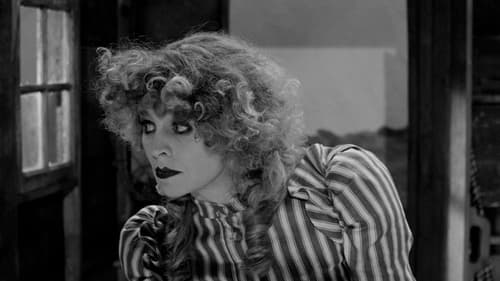
Director of Photography
An avant-garde examination of the relationship between women and money in society. Mixing musical, silent melodrama, and philosophical treatise into a post-punk, heady brew.

Director of Photography
Adaptation of an avant-garde play about Rhoda, a hysterical heroine who feels oppressed by the people around her. She suffers through her birthday party, goes to see a doctor, plans a vacation, argues a lot and even breaks the fourth wall.

Cinematography
Autobiographical film about Loulou (Jackie Raynal) who seeks a job as an editor on Broadway, shares a loft in Soho and marries an entrepreneur.

Editor
A “narrative” film centered on young artists living in New York City around 1979. The film is about a certain stage in the development of a young artist confronting the real world in terms of her own idealistic notions of what art is supposed to do. You never see her. She is the camera’s eye and when someone says to the camera “My darling be careful”, it could be addressing her or you the spectator. The subjective camera set-up challenges your position as an impartial observer. - BM

Cinematography
A “narrative” film centered on young artists living in New York City around 1979. The film is about a certain stage in the development of a young artist confronting the real world in terms of her own idealistic notions of what art is supposed to do. You never see her. She is the camera’s eye and when someone says to the camera “My darling be careful”, it could be addressing her or you the spectator. The subjective camera set-up challenges your position as an impartial observer. - BM

Producer
A “narrative” film centered on young artists living in New York City around 1979. The film is about a certain stage in the development of a young artist confronting the real world in terms of her own idealistic notions of what art is supposed to do. You never see her. She is the camera’s eye and when someone says to the camera “My darling be careful”, it could be addressing her or you the spectator. The subjective camera set-up challenges your position as an impartial observer. - BM

Writer
A “narrative” film centered on young artists living in New York City around 1979. The film is about a certain stage in the development of a young artist confronting the real world in terms of her own idealistic notions of what art is supposed to do. You never see her. She is the camera’s eye and when someone says to the camera “My darling be careful”, it could be addressing her or you the spectator. The subjective camera set-up challenges your position as an impartial observer. - BM

Director
A “narrative” film centered on young artists living in New York City around 1979. The film is about a certain stage in the development of a young artist confronting the real world in terms of her own idealistic notions of what art is supposed to do. You never see her. She is the camera’s eye and when someone says to the camera “My darling be careful”, it could be addressing her or you the spectator. The subjective camera set-up challenges your position as an impartial observer. - BM

Director
A naive look at Southern California by an outsider, and/or an essay on displacement through the disjunction of Californian images and off screen voices. Where is the location of these voices, here or there? Are the images near or far in relation to the voices? Are the images commenting on the images or vice versa?

A naive look at Southern California by an outsider, and/or an essay on displacement through the disjunction of Californian images and off screen voices. Where is the location of these voices, here or there? Are the images near or far in relation to the voices? Are the images commenting on the images or vice versa?

Director of Photography
This key work of the late 1970s, now digitally restored, is a unique attempt to combine contemporary debates around formalism, feminism and psychoanalysis in film. Implicitly engaged in a critical dialogue with filmmakers like Yvonne Rainer and Jean-Luc Godard, as well as the theorists of 'Screen' magazine, Sigmund Freud's Dora is a milestone in the evolution of structuralist film strategies into broader questions of representation.

N°31
Reel 4 of Gérard Courant's on-going Cinematon series.
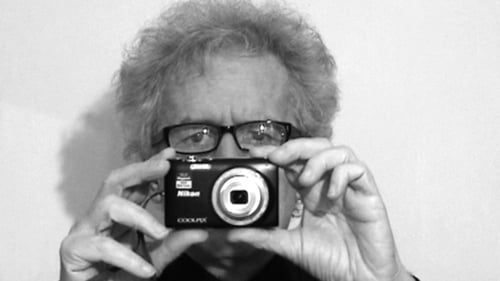
N°31
Синематон» - 201-часовой фильм французского режиссёра Жерара Куранта. Он считается одним из самых длинных фильмов когда-либо выпущенных. Создающийся более 35 лет (с 1978 по 2018), он состоит из серии 3027 беззвучных виньеток, каждая продолжительностью по 3 минуты 25 секунд, в которых показываются различные знаменитости, художники, журналисты и друзья режиссёра, каждый делающий то, что он хочет, за отведённое время. В фильме показаны режиссёры: Барбет Шредер, Нагиса Осима, Фолькер Шлендорф, Кен Лоуч, Юсеф Шахин, Вим Вендерс, Джозеф Лоузи, Жан-Люк Годар, Сэмюэл Фуллер и Терри Гиллиам; гроссмейстер Жоэль Лотье и актёры Роберто Бениньи, Стефан Одран и Жюли Дельпи. Терри Гиллиам показан поедающим купюру в 100 франков. Сэмюэл Фуллер курит сигару. Своим любимым героем фильма Жерар Курант считает семимесячного ребёнка.

Director
A filmed record of a solo performance by American postmodern dancer and choreographer Trisha Brown. In order to better understand the dance, Mangolte learned to perform it herself. Mangolte shot Brown as she performed the solo twice, and then on the third take she decided to film in slow motion: "I shot slow motion, knowing that it would reveal the dance and the movement in a totally different context... the slow motion version permits a second look at the choreography, and the spectators can marvel at what they remember and also what they missed the first time around."
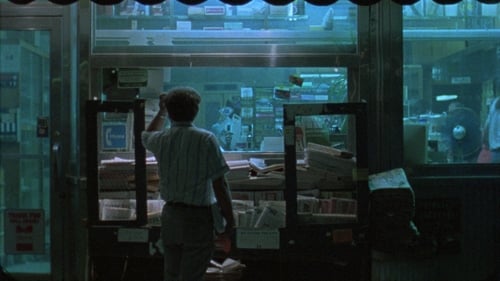
Director of Photography
Belgian filmmaker Chantal Akerman lives in New York. Filmed images of the City accompany texts of Akerman's loving mother back home in Brussels. The City comes more and more to the front while the words of the mother, read by Akerman herself, gradually fade away.

Editor
A subjective account of the act of making still photographs.

Producer
A subjective account of the act of making still photographs.

Director of Photography
A subjective account of the act of making still photographs.

Director
A subjective account of the act of making still photographs.

Director of Photography
Kristina, a self-named Hungarian female lion tamer, arrives in New York to become a dance choreographer. Kristina, now a middle-class NYC artist concerned about the environment, has a sailor lover named Raoul. The film, a collage work, an essay film, a fictional narrative and a documentary all rolled into one, is one of the most important independent American feminists films made during the 1970's.

Cinematography
With Linda Patton and James Barth Silent, (24 frames per second) A linear succession of activities/manipulations of objects. Film = Now Projected Film = (Now)

Director
With Linda Patton and James Barth Silent, (24 frames per second) A linear succession of activities/manipulations of objects. Film = Now Projected Film = (Now)
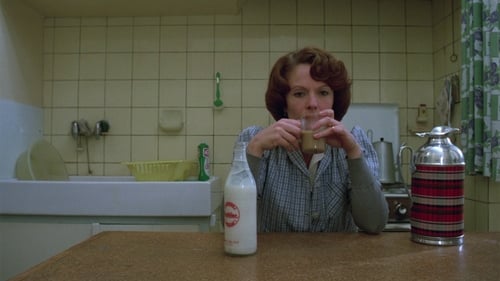
Director of Photography
Жанна Дильман — вдова и мать-одиночка, живущая в квартире, адрес которой вынесен в название фильма. В фильме показаны три последовательных дня её жизни. Она застилает кровать, собирает сына-подростка в школу, готовит еду, идёт в магазин за покупками, пьёт кофе, моет посуду, вечером ужинает с сыном. Днём она занимается проституцией — принимает дома клиентов и тем обеспечивает себя и сына. На секс с клиентом отводится время, которое требуется картошке, чтобы свариться. На второй день в установленном порядке начинаются сбои...

Director
The film is about looking. I bet that slight variations of few recurrent elements would encourage the viewer to free associate and to fantasize a kind of narrative. - BM
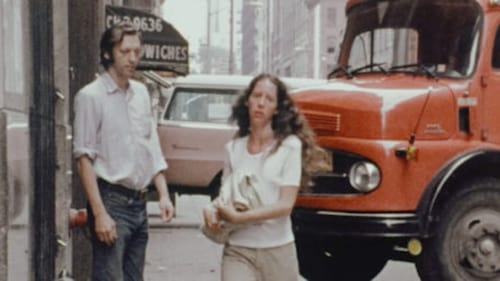
Camera Operator
Time: the 1970’s. Place: New York City. This dramatized essay explores how women feel about verbal harassment by men on the street. What do they think? What do they want to do?
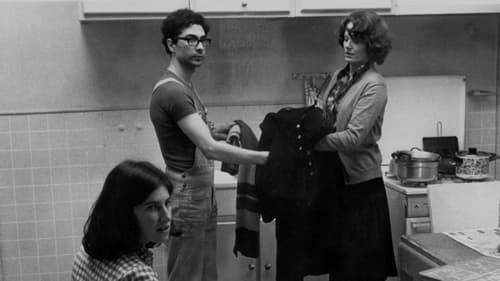
Self
During the filming of "Jeanne Dielman" Sami Frey recorded what was happening on the set. A film about a film in the making.

Editor
Rainer’s landmark film is a meditation on ambivalence that plays with cliché and the conventions of soap opera while telling the story of a woman whose sexual dissatisfaction masks an enormous anger.

Director of Photography
Rainer’s landmark film is a meditation on ambivalence that plays with cliché and the conventions of soap opera while telling the story of a woman whose sexual dissatisfaction masks an enormous anger.
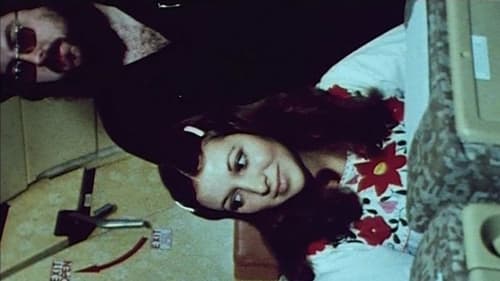
Director of Photography
Described (rather cheekily) by director Michael Snow as a musical comedy, this deft probing of sound/image relationships is one of his wittiest, most entertaining and philosophically stimulating films. In his words, the film “derives its form and the nature of its possible effects from its being built from the inside, as it were, with the actual units of such a film, i.e. the frame and the recorded syllable. Thus its ‘dramatic’ element derives not only from a representation of what may involve us generally in life but from considerations of the nature of recorded speech in relation to moving light-images of people.’”

Described (rather cheekily) by director Michael Snow as a musical comedy, this deft probing of sound/image relationships is one of his wittiest, most entertaining and philosophically stimulating films. In his words, the film “derives its form and the nature of its possible effects from its being built from the inside, as it were, with the actual units of such a film, i.e. the frame and the recorded syllable. Thus its ‘dramatic’ element derives not only from a representation of what may involve us generally in life but from considerations of the nature of recorded speech in relation to moving light-images of people.’”

Director of Photography
Hotel Monterey is a cheap hotel in New York reserved for the outcasts of American society. Chantal Akerman invites viewers to visit this unusual place as well as the people who live there, from the reception up to the last story.

Cinematography
An unfinished Chantal Akerman film about the troubled youths and drug addicts going through rehabilitation in Yonkers, New York.

Director
Choreographed by american choreographer, Lucinda Childs, the film explores complex patterns that are created with the simple action of walking

Director of Photography
Furniture and clutter of one small apartment room become the subject of a moving still life—with Akerman herself staring back. This breakthrough formal experiment is Akerman's first film made in New York.

Editor
Embodying Rainer’s aesthetic rigor and wit, the film combines fiction and documentary, script readings, dance snippets, still photos, and tableaux vivants to explore issues of power and gender that influence the emotional lives of her performers.

Director of Photography
Embodying Rainer’s aesthetic rigor and wit, the film combines fiction and documentary, script readings, dance snippets, still photos, and tableaux vivants to explore issues of power and gender that influence the emotional lives of her performers.
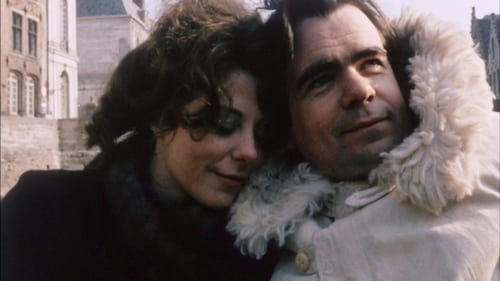
Camera Operator
While working on a documentary about the city of Bruges, an artistically frustrated filmmaker must deal with the increasing difficulties in his marriage.
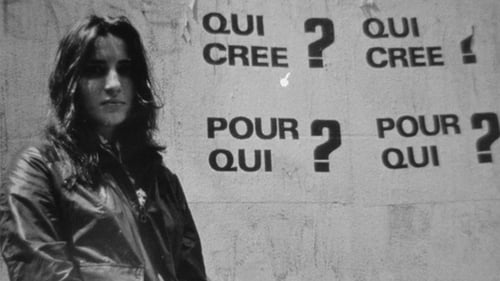
Assistant Camera
During the summer of 1968, a young French woman staying in an isolated country house reflects upon her involvement in the events of that May.

Director of Photography
Presents an intimate view of four decades of the Swiss-born artist Robert Frank who has had an extraordinary influence on contemporary photography and filmmaking. This documentary which examines his life through his films and photographs, includes interviews with many of his collaborators and contemporaries. Written, directed and edited by Philip Brookman, Amy Brookman




























































